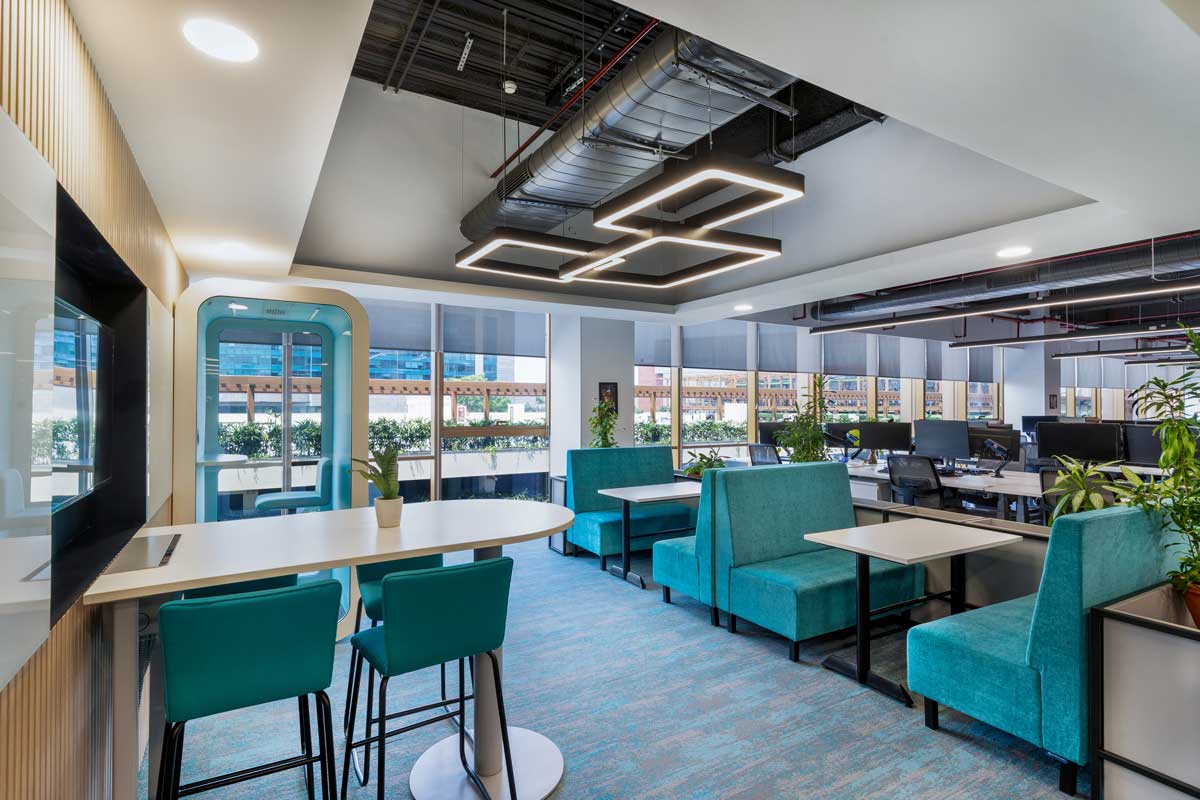In 2022, India crossed 45 million sq ft of commercial leasing, a milestone for the country, especially given the two years preceding it. Within that demand, there has been a significant increase in leasing activities for flex spaces. While coworking and flexible workspace management companies accounted for around 7 to 9 per cent of overall commercial leasing in India two years ago, today they account for 17 to 19 per cent. Compared to the pre-COVID period, the outsourced office market is witnessing a significant uptick in demand for flexible workspaces as companies continue to show reluctance towards capex spends on non-core activities. So it is no surprise that given our population and workforce, India is the second-largest market for flexible workspaces in the Asia Pacific (APAC), second only to China. Recognising the opportunity, Simpliwork Offices partnered with Salarpuria Sattva to establish the company in 2018. Currently one of India’s largest outsourced office providers, it designs and builds fully furnished, customised workspaces. To learn what makes this market such a lucrative proposition,
CW’s R SRINIVASAN spoke to Ajay Alur, COO….
What prompted you to establish a startup based on the flex office space segment?
The need for outsourced office space started getting felt about seven to eight years ago. Primarily, the category was created by the global launch of coworking spaces and grew to become a major trend. Typically, mid to large enterprises were averse to shared spaces due to concerns of data, network and employee security, among others. However, they would be open to dedicated spaces if they were given a certain amount of flexibility in the way they operated the facility. This solution was missing in the market and resulted in the inception of Simpliwork to address this gap.
How much research went into finalising the idea and setting up a viable business model?
We conducted a year’s research before starting Simpliwork Offices. And the more we studied the outsourced office space, the more we realised that there was a huge gap in the mid to large office segment. We partnered with Salarpuria Sattva at an early stage, the end of 2018. They came in as an equity partner. Their expertise in commercial real estate was a huge advantage in the market and gave us access to the market. Our funding comes from banks and large financial institutions. We work with credit-rated customers with assured lock-in periods and, hence, banks are comfortable working on debt funding for our projects.
Please tell us about your fundraising plans?
We are actively exploring fundraising and are in the midst of active discussions with suitable real-estate funds, private equity players and large financial institutions. Our capital expenditure of Rs 7,500 million for FY 2023-24 is a mix of equity and debt. Debt funding helps us meet our capital expenditure expansion plans across top cities while equity is required to put together a hypergrowth plan.
Who is your target customer?
If you look at the current landscape in India, a lot of Global Competency Centres (GCCs) are being set up. A report predicts that by 2030, India will have 2,400 GCCs, and that number can potentially increase to 2,550 as the country emerges as the world’s technology and services hub. Any GCC entering India is our primary target customer, Likewise, the IT and ITES sector. We are also looking to harness companies that are expanding in Asia and then coming to India. We also have clients in the engineering and engineering services space. Manufacturing would be our smallest segment of customers.
Which industry segments account for the highest market share in this segment?
Technology accounts for 50-60 per cent; consulting services 15 per cent; engineering/engineering services 10 per cent; and manufacturing 5 per cent.
What are the factors behind Mumbai’s office leasing decline from 3.6 to 3 million sq ft?
Mumbai is a high-cost real-estate city. Moreover, during COVID, the city had an issue of the talent pool moving out. Large occupiers may have given up some office space due to this causing some decline. Moreover, given the space shortage and cost of real estate in Mumbai, enterprises usually never look for very large spaces like 100,000 sq ft to 1 million sq ft of office space, which is very normal in other cities. Typically, occupiers look for 100-500 seats that translate to 5000-50,000 sq ft. Hence, the number of occupiers taking up large spaces is fewer in Mumbai.
Which type of offices – per-desk, per-sq-ft models – are most sought-after in Mumbai?
Mumbai typically works on a per-desk model rather than a per-sq-ft model. In the city, the requirement for private offices is high because of the nature of the customer, largely fund houses, fintech players, private equity players, financial institutions, sales headquarters or financial headquarters of large MNCs. A bank, for instance, would have a front office and this would be a private office. Hence, the more successful model is per-desk and private offices and the demand is for Grade A spaces only.
Further, enterprises in Mumbai want a one to two-year lock-in to keep their options open. Moreover, as demand is typically for 100-500 seats, this falls in line with the prebuilt inventory. This is why Mumbai operators work with per-desk pricing and private offices.




















